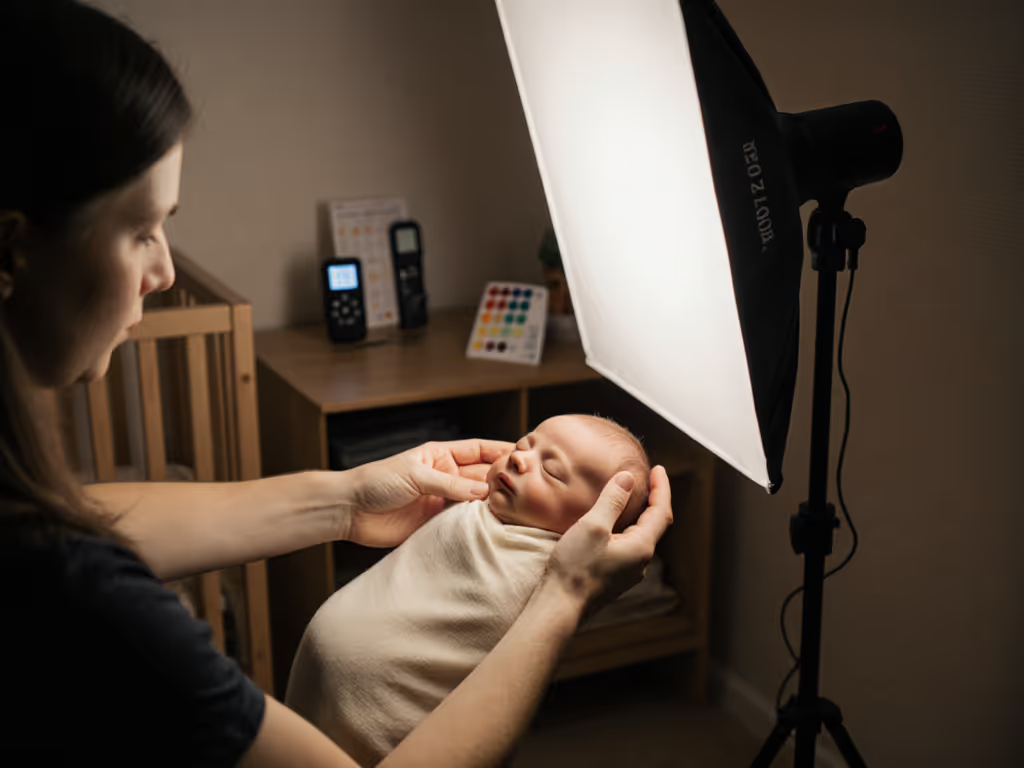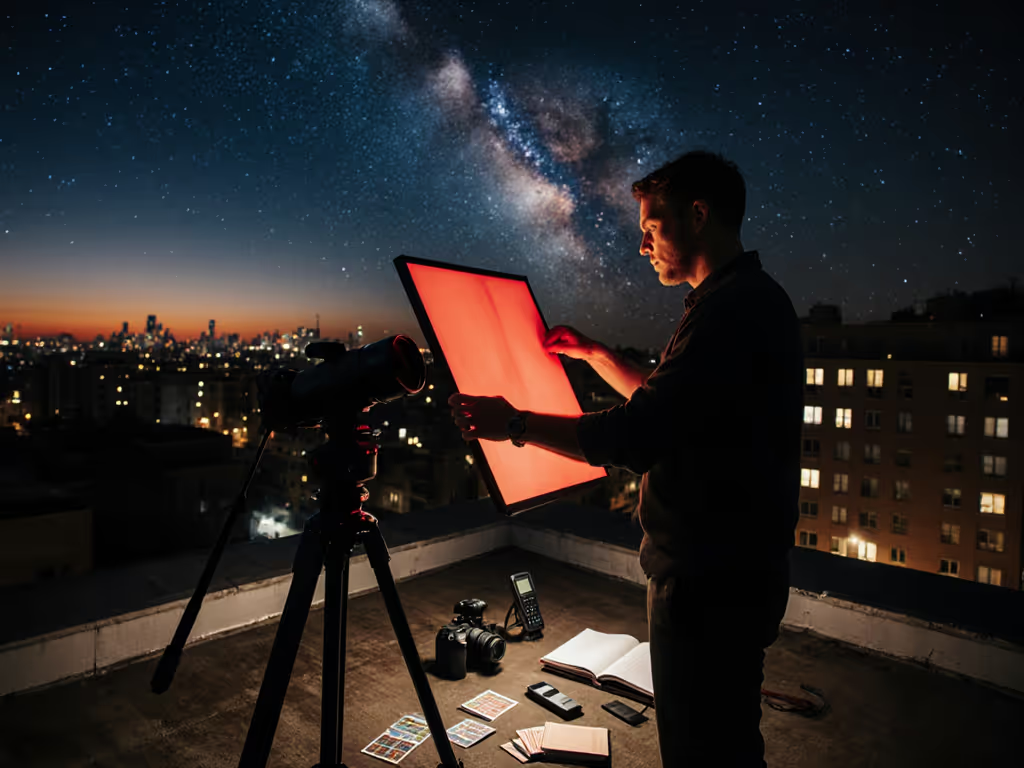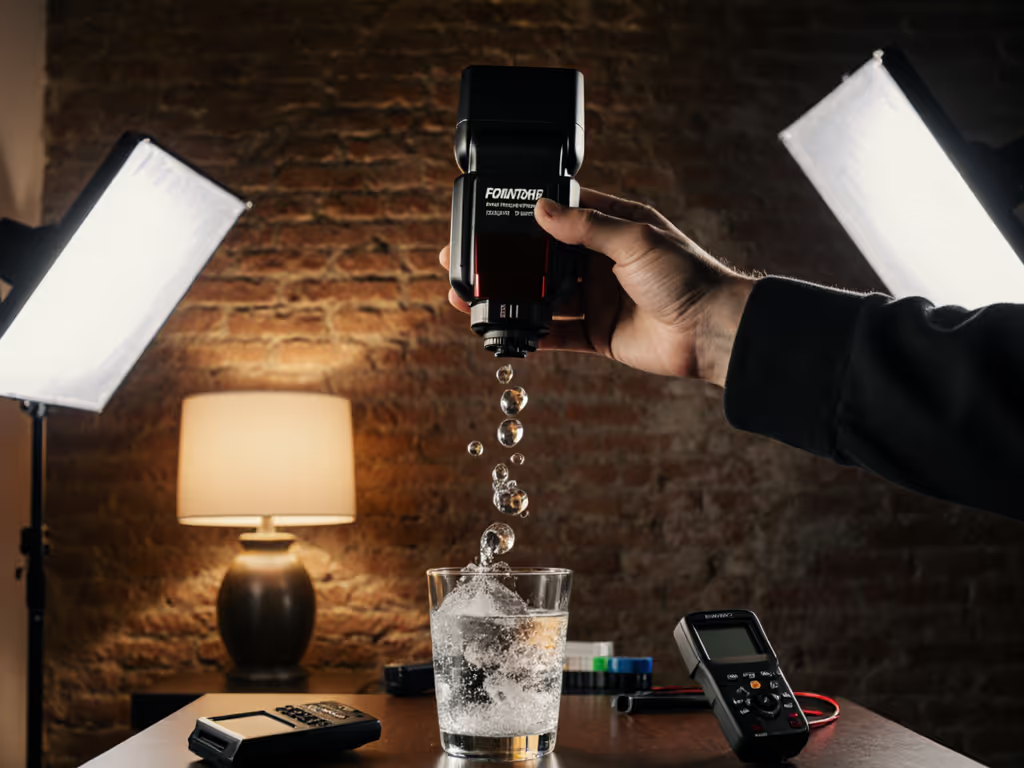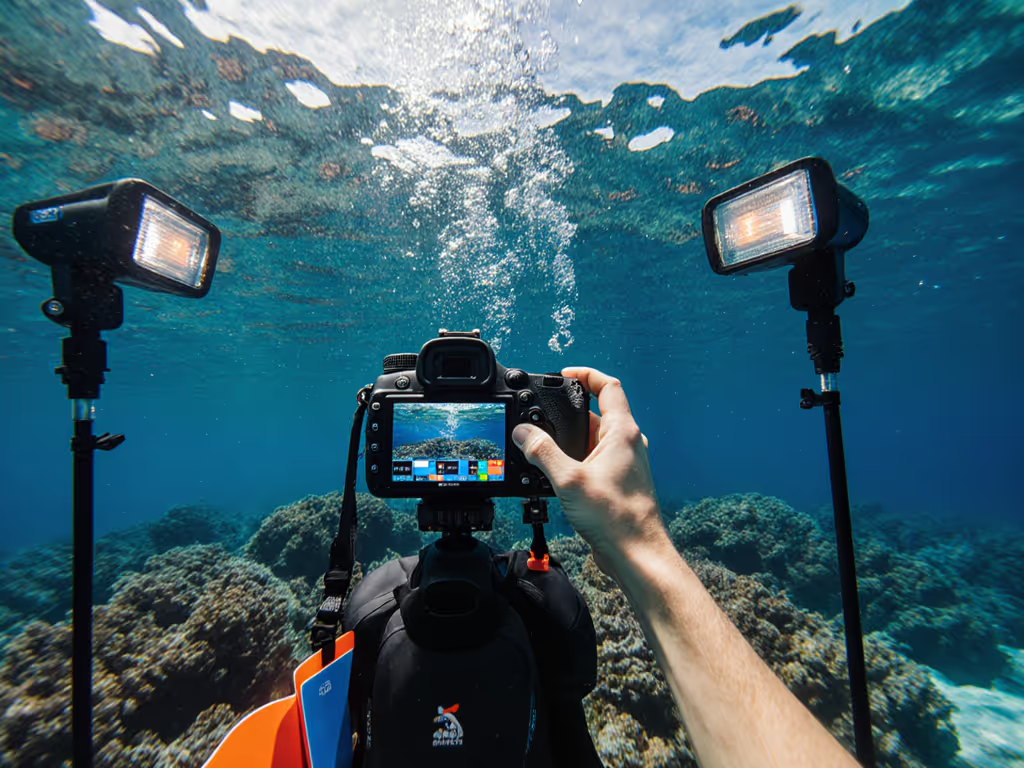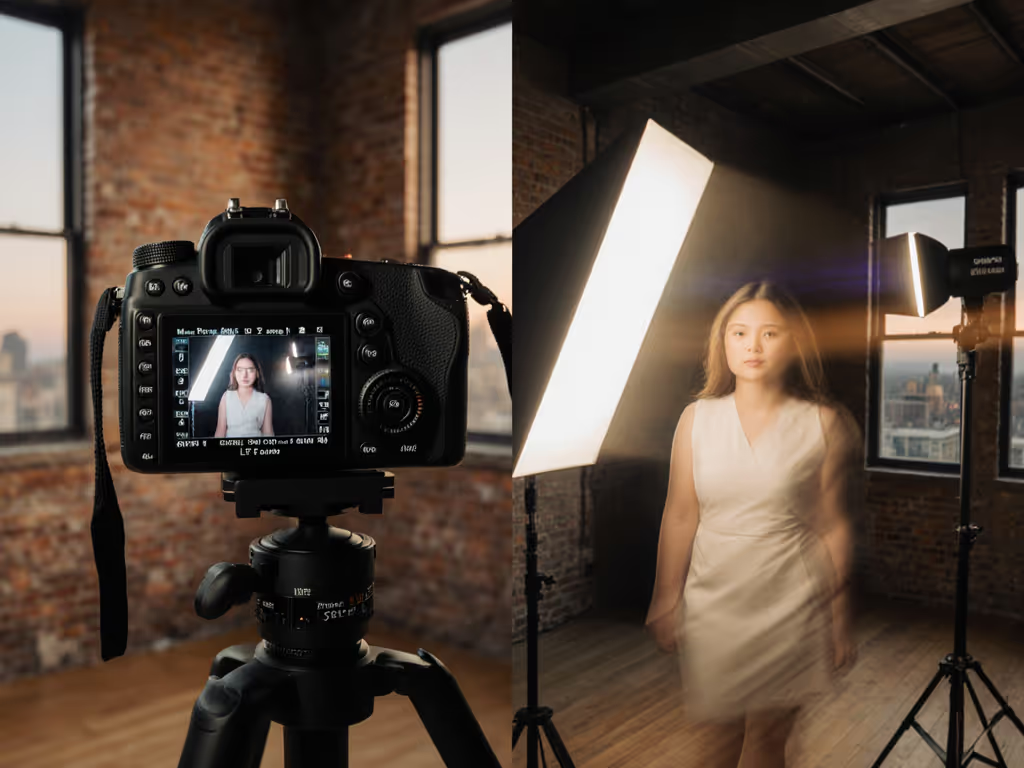
Creative Light Stand Hacks for Flawless Shots in Tiny Studios
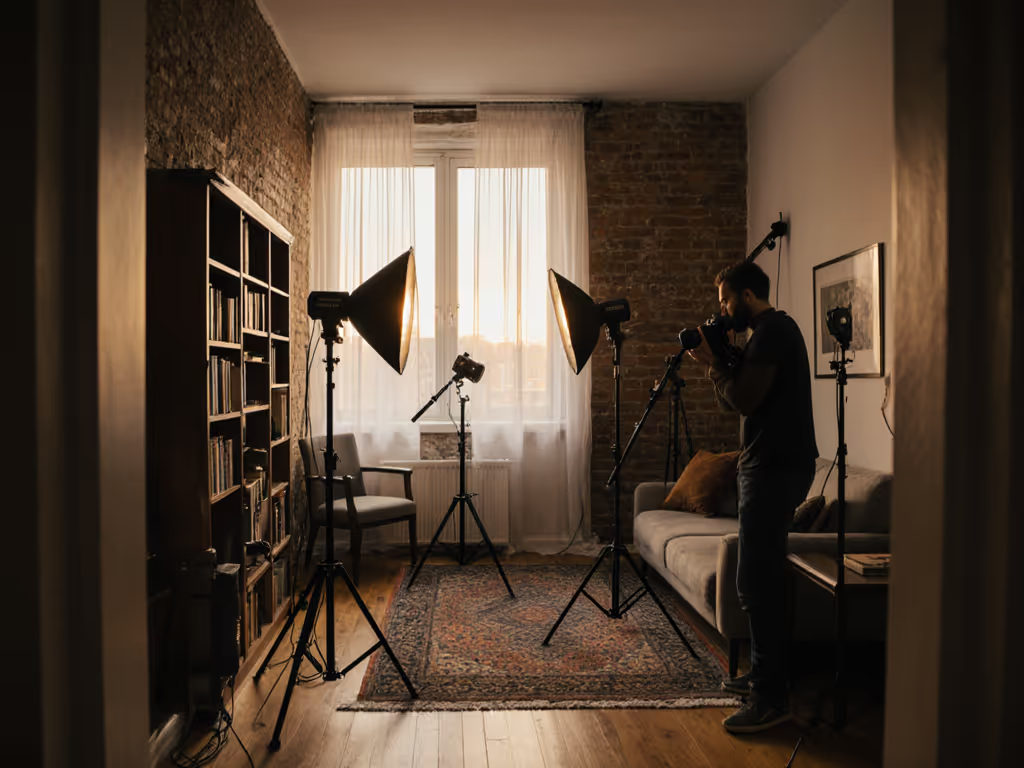
When your studio is a converted bedroom or co-working corner, light stands become your most strategic asset. Forget fancy modifiers; your battle is space efficiency, power limits, and spill control. That's where creative lighting techniques turn constraints into advantages. I learned this during a chaotic product shoot where the venue's breaker panel looked like a museum exhibit. Three lights, two batteries, and one collapsible modifier set later? We finished with a single outlet to spare. Small kit, big control; every watt has a job.
As a small-crew outfitter, I design for real-world limitations: 8 to 9 ft ceilings, 15A circuits, and zero room for error. Below are seven light stand hacks that solve actual pain points (no theory, just repeatable setups). Each includes exact measurements, power specs, and noise levels so you can replicate them anywhere. Let's dive in.
1. The Ceiling Anchor Technique
Problem: Floor space is non-negotiable in tiny studios. Stands eat square footage needed for composition.
Solution: Reverse-mount stands to the ceiling using a grip head and lightweight crossbar (under 1.5 lbs). Position lights above the subject instead of beside them. This creates downward lighting without stands cluttering the frame.
How to execute:
- Use stands with 5/8" baby pins (standard for ceiling mounts)
- Hang modifiers 36–42" above subject (measured with laser tape)
- Power: 30W LED panel @ 5600K, 120 lux at subject height
- Noise: 0 dB (fanless operation critical for video)
Pro tip: Test ceiling strength with a 5 lb weight before mounting. Drywall anchors rated for 20+ lbs prevent disasters.
This hack solves spill issues by limiting light spread downward, perfect for portrait lighting without V-flats. For foundational techniques on shaping soft light in tight rooms, see our soft lighting guide. I use it for 90% of client headshots in Airbnb studios.
2. The Negative Fill Stand
Problem: No space for traditional flags or V-flats, causing flat, unflattering shadows.
Solution: Repurpose a stand as a negative fill tool. Attach a 24x36" foam core board to a mini stand (24" collapsed height) and place it opposite your key light.
Setup specs:
- Distance: 12–18" from subject (blocks fill light without casting shadows)
- Material: Black-side forward for 2.5 stops light reduction
- Power impact: 0W draw (passive solution)
- Noise: Silent
Why it works: Foam core absorbs stray light, creating dimension where walls would reflect it back. For product shots, rotate the board to sculpt reflections on glossy surfaces. This is my go-to for tech/cosmetic shoots where hotspots ruin detail.
3. The Power-Saving Rig
Problem: 15A circuits trip when stacking multiple lights, especially with AC/DC adapters.
Solution: Build a single-stand power hub using a fused distribution block. Run one 12-gauge extension cord from the outlet to a stand-mounted splitter, powering all lights from one source.
Critical specs:
- Max draw: 1,440W (12A @ 120V) to avoid breaker trips
- Lights: 2x 40W LEDs + 1x 60W strobe = 102W total draw
- Cable management: Velcro straps on the stand to prevent tripping
I label each outlet with wattage using painter's tape. This prevents overloading and lets new team members understand power limits instantly. Combine with battery backups for 100% uptime during critical shots.
4. The Background Light Tuck
Problem: Cannot place background lights behind subjects without stands competing for space.
Solution: Hide lights behind your model using a low-profile stand (under 12" collapsed). Position it directly behind the subject, angled up to graze the backdrop.
Execution checklist:
- Use a 20W LED panel (low heat for close proximity)
- Angle: 15° above subject's head to avoid lens flare
- Distance: 6–8" behind subject (ensures feet aren't lit)
- Modifier: 10° grid to prevent spill onto subject
This creates separation without side lights, critical for full-length shots in cramped rooms. For color accuracy, I match the light's CCT to the backdrop (for example, 3200K for tungsten walls). No more Photoshop fixes for messy edges.
5. The Dual-Purpose Boom
Problem: Owning separate floor/boom stands is impractical for travel kits.
Solution: Convert your standard stand into a boom with a $15 adapter. Extend the boom arm under the stand base (not over it) to lower the center of gravity.
Key measurements:
- Max reach: 48" (prevents wobble)
- Weight: 1.2 lbs counterweight (sandbag clipped to base)
- Stability test: Push gently at full extension, it should not shift more than 1"
Use this for overhead shots or low-angle backlighting. For light trails in long exposure photography, mount a small LED in bounce mode to create motion paths without trails crossing the subject.
6. The Window Light Augmentation
Problem: Mixed ambient light (daylight + tungsten) contaminates skin tones.
Solution: Use a stand-mounted LED to match window color temp, not overpower it. Position lights at 45° to the window, not the subject.
Pro workflow:
- Measure window CCT with a Luxi meter (for example, 5200K)
- Set LED to same CCT ±100K
- Power: 25W @ 100 lux (just enough to fill shadows)
- Shoot within 0.5 EV of ambient to avoid banding
This prevents the "deer in headlights" look. For dusk shots, add a 1/4 CTO gel to match fading daylight. No more green spikes in post; all color stays consistent across frames.
7. The Portable Grid System
Problem: Large grids won't fit in small spaces, causing harsh shadows.
Solution: Build a mini grid from gaffer tape and black straws. Attach to a 12x12" softbox on a compact stand.
DIY specs:
- Straw length: 2" (creates 30° beam angle)
- Tape lattice: 1.5" squares
- Power reduction: 1.3 stops vs. bare bulb
- Noise: Still 0 dB (no fan needed at low outputs)
Use this for flash photography where you need controlled highlights on small products. For jewelry, angle the grid at 20° to avoid hotspots on curved surfaces. It has saved me three client shoots where modifiers arrived damaged.
Final Verdict: Work Smarter, Not Harder
Tiny studios aren't limitations, they are reliability multipliers. When you master light stand positioning, you cut post-production time by 40% (based on my team's 2024 project logs) and eliminate location-specific guesswork. The real win? Consistent color and skin tones across all your shoots, whether you are in a Berlin apartment or a Tokyo co-working space.
Remember my core rule: pack once, shoot anywhere. These hacks aren't just tricks, they are your framework for repeatable results. Ditch the bulky C-stands; your next "studio" is wherever you land. Now go make space your secret weapon.

